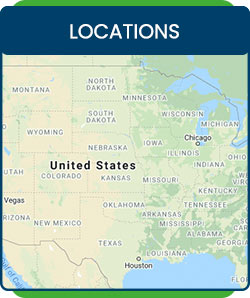Allergic Rhinitis Connected to Sleep Apnea
Spring Has Sprung, Have Your Allergies?


With allergy season around the corner, many allergy sufferers will begin to notice their symptoms have sprung! Between allergic rhinitis and obstructive sleep apnea (OSA) many are struggling to get the restorative sleep they need. The correlation between sleep quality interrupters is gaining a great deal of discussion in the medical and dental communities leading to recent research and new treatments.
It should not be surprising that nasal allergies, or allergic rhinitis, and OSA may be related because both conditions involve the same region of the body and affect breathing. Allergy congestion hinders nasal breathing and can lead to mouth breathing. According to Dr. Willey, “If you’re a mouth breather, then you aren’t getting the filtration benefits from the nose; the body’s natural filtration system.” Studies continue to show allergies contribute to “apneas”, which are episodes where breathing stops for a few seconds and over a minute, reducing oxygen intake.
What Are Allergies?
Patients experiencing allergic rhinitis are adversely affected by particles in the air. After breathing these allergens in, the nasal passages become irritated and inflamed. Other reactions include itchy or watery eyes, sneezing, and other cold-like symptoms. Leading to poor sleep quality and reduced daytime performance. Common allergens include pet dander, mold, pollen, dust, and more. Pillows, linens and carpet can be a hoarding ground for allergens and should be investigated as possible contributing factors. Allergy sufferers can experience symptoms all-year round not only seasonally.
What is Obstructive Sleep Apnea (OSA)?
OSA is a sleep-related breathing disorder that repeatedly interrupts sleep when breathing temporarily stops for seconds or minutes. These stoppages during sleep are often the result of the lower jaw, muscles and tongue collapsing in the airway obstructing the flow of air with needed oxygen, called “apneas” and can be complicated by allergy induced inflammation in the airway. Those suffering from OSA struggle to get a good night of sleep and can experience snoring, waking multiple times a night and excessive daytime sleepiness. Potential health conditions associated with OSA include the risk for stroke, heart disease, atrial fibrillation, diabetes, high blood pressure and cognitive challenges, along with disruption of hormone production and regulation. There are three basic treatments for sleep apnea; surgery, CPAP and custom oral appliance therapy. Serious medical consideration should be pursued if symptoms here are familiar in your health profile along with allergic rhinitis.
The Nasal Airway and Breathing
Congestion from allergies in the nasal region is attributed to over 60% of disruptions in normal breathing. The upper airway becomes narrower when there is congestion and can result in snoring and increase risk of apneas during sleep. These breathing disruptions alone can create “fragmented” periods of sleep interrupting the body’s natural restorative time during specific sleep cycles. Physical obstructions or inflammation related nasal obstructions can also create a buildup of pressure that contributes to headaches, teeth grinding along with the risks of apneas.
Indoor Allergens
Allergies can definitely persist year-round, in part because allergens exist indoors and outdoors. During the winter months there is less pollen in outdoor air and most homes have the windows closed that prevents entry. Indoor allergens may exist in the sleeping room; including mold, dust, pet danger, dust mites and may be circulated throughout the home by the heating system or be found in carpet, pillows and linens. Another commonly overlooked source of allergens is an old mattress. An older worn-down bed mattress is capable of housing dust mites that feed on skin cells and other particles as well as inducing allergy symptoms year round.
Help for Allergy sufferers
Preventing further reduction in the airway, custom oral appliance therapy positions the lower jaw in a forward position, preventing the collapse of the airway, allowing the allergy sufferer more space in the airway making it easier to breathe and get the oxygen they need.
Another treatment involves wearing a mask with continuous positive airway pressure (CPAP) device, where the air pressure attempts to force the airway open while you sleep. “With combination therapy, custom oral appliances can help reduce the need for higher air pressures in CPAP therapy.” stated Dr.Rod Willey of Koala® Center For Sleep & TMJ Disorders. Although, studies show buildup of bacteria and allergens remaining inside the CPAP hoses can create additional health issues. Durable Medical Equipment (DME) suppliers have recently addressed this by the addition of cleaning machines to go along side of the CPAP. If bloating, facial lines, comfort or convenience becomes a problem, many patients diagnosed with sleep apnea stop wearing the CPAP. Living with untreated sleep apnea or CPAP Intolerance can create a stream of serious health risks and relationship issues.
Those with allergy symptoms may be resorting to steroids and other medications to help them sleep and function during the day. Medical and dental providers continue searching for the most comprehensive integrated approaches for effective treatment of patients with allergies and sleep apnea. Active adults are searching for natural, comfortable, and convenient treatments for sleep apnea that can help them breath when their allergies have sprung.
Allergies and Co-Morbidity
Dr. Richard Lockey, an allergist at the University of South Florida Health, explained that allergies may increase the likelihood for colds, respiratory infections, asthma, and OSA. Allergists are often able to detect when a patient with allergies has comorbidities such as OSA or asthma. Those with allergic rhinitis who regularly snore may want to be tested for OSA. Today, many pulmonary sleep centers offer home sleep studies in addition to their sleep labs. The sleep study is the gold standard for diagnosing obstructive sleep apnea, and now easier to access.
Facts suggesting a relationship between allergic rhinitis and OSA:
- The American Review of Respiratory Disease says allergic rhinitis can cause the stoppages of breathing in OSA patients to last longer and occur more frequently.
- An important note, researchers have yet to find allergy treatments to actually prevent OSA.
- In patients with allergic rhinitis, over 50% were considered “at increased risk” for OSA.
- People with nasal congestion are nearly 2x more likely to have difficulty sleeping, or apneas.
An online survey conducted in 2004 to assess QoL (quality of life) in 2002 patients with AR and nasal congestion (or their caregivers) has reinforced these findings [10]. Within the subgroup of working adults (n = 1043), 59% reported that their congestion had affected their job performance. Of the 446 caregivers, 42% said that congestion led to their child’s poor productivity in school. Nasal congestion associated with AR also led to feelings of discomfort, frustration, fatigue, irritability, and stress* [10]. A Swedish survey of 9538 adolescents with AR and/or asthma found that severe nasal symptoms were associated with lower grades in school [11].
*Interesting to note the effects of sleep related breathing disorders also share similar symptoms to daytime effects of allergies.
As a Medical Dental Clinic, the professional teams of Koala® Center For Sleep & TMJ Disorders understand that often sleep interruptions can be exacerbated by allergies and colds. One reason we work with medical providers on behalf of patients is so they experience better outcomes with our integrated medical approach. Your medical dental teams provide comprehensive solutions for your quality of life. To schedule an appointment at a location near you contact us.

Additional Services You May Need
▸ KoalaKIDZzz®
▸ Sleep Apnea
▸ Snoring
▸ TMJ Disorder
▸ Fatigue
▸ Sleep Disorders
▸ Weight Loss
▸ CPAP Alternative
▸ Oral Appliances




